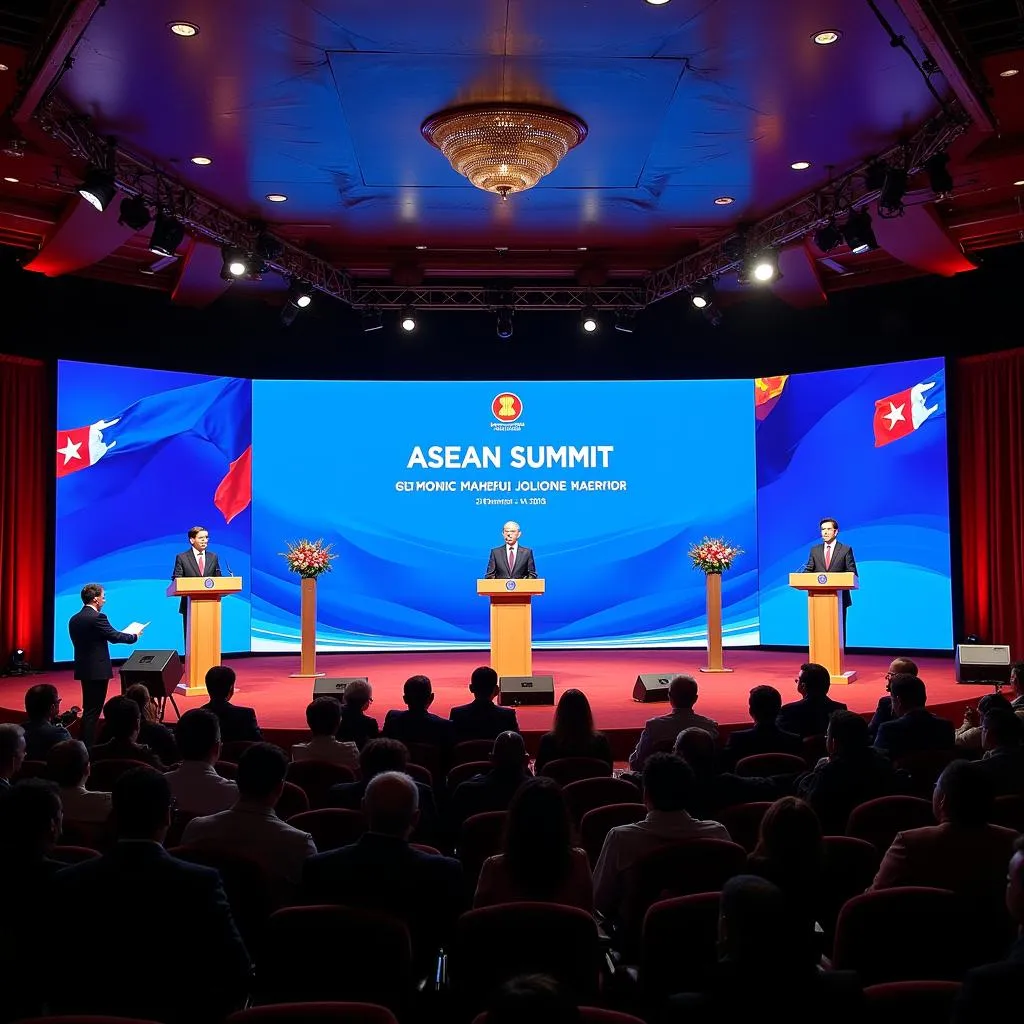The Association of Southeast Asian Nations (ASEAN) is a regional organization comprised of ten Southeast Asian countries. It was founded in 1967 with the goal of promoting economic, political, and social cooperation among its member states. Over the years, ASEAN has evolved into a dynamic regional bloc with a significant impact on the global stage. Understanding the Goals Of Asean is crucial for comprehending the organization’s role in shaping the future of Southeast Asia and its contribution to international affairs.
The Pillars of ASEAN Cooperation
The goals of ASEAN are underpinned by a set of fundamental principles and objectives. These can be broadly categorized into three key pillars:
1. Political-Security Community
- Promoting peace, stability, and security in the region: ASEAN aims to prevent conflicts and promote dialogue among member states, ensuring a peaceful and secure environment for economic growth and development.
- Strengthening regional cooperation: ASEAN works to foster collaboration in areas such as border security, counterterrorism, and humanitarian assistance, enhancing regional resilience and collective action.
- Promoting human rights and democracy: ASEAN advocates for the protection of human rights, democratic principles, and good governance within its member states.
2. Economic Community
- Boosting regional economic integration: ASEAN strives to create a single market and production base, facilitating trade, investment, and economic growth.
- Promoting free trade and investment: ASEAN has established several free trade agreements with partner countries, including the ASEAN Free Trade Area (AFTA), to reduce trade barriers and encourage investment.
- Developing infrastructure and connectivity: ASEAN is investing in infrastructure projects, such as transportation networks, energy grids, and digital connectivity, to improve regional integration and facilitate economic activities.
3. Socio-Cultural Community
- Promoting cultural exchange and understanding: ASEAN aims to foster cultural exchange and cooperation, celebrating the diversity of cultures and traditions within the region.
- Enhancing educational and scientific collaboration: ASEAN supports educational and scientific collaboration, promoting research and development, and capacity building in various fields.
- Promoting sustainable development: ASEAN emphasizes the importance of environmental protection, climate change mitigation, and sustainable development practices to ensure a better future for all.
Key Achievements of ASEAN
Over the years, ASEAN has achieved significant progress in fulfilling its goals. Some notable achievements include:
- Economic Growth: ASEAN has witnessed impressive economic growth, becoming one of the fastest-growing regions in the world.
- Regional Stability: ASEAN has successfully prevented major conflicts within the region and promoted peaceful resolution of disputes.
- International Cooperation: ASEAN has established strong partnerships with other countries and regional organizations, playing an active role in global affairs.
Challenges and Future Prospects
Despite its successes, ASEAN faces various challenges in the future. Some of the key challenges include:
- Maintaining Regional Stability: Addressing security threats such as terrorism and piracy, as well as navigating the complexities of geopolitical rivalries.
- Accelerating Economic Integration: Overcoming barriers to trade and investment, improving infrastructure, and promoting a more equitable distribution of economic benefits.
- Addressing Social Issues: Tackling poverty, inequality, and other social issues while promoting sustainable development and environmental protection.
“ASEAN’s success is a testament to the power of regional cooperation and its ability to address complex challenges,” says Dr. Sarah Lee, a renowned Southeast Asian affairs expert. “Looking ahead, ASEAN has the potential to become an even more influential force in shaping the global landscape.”
FAQs
1. What are the main goals of ASEAN?
The main goals of ASEAN are to promote economic, political, and social cooperation among its member states, contributing to regional stability, economic growth, and sustainable development.
2. How does ASEAN promote economic integration?
ASEAN promotes economic integration through various initiatives, such as reducing trade barriers, promoting investment, and developing infrastructure.
3. What are some of the challenges facing ASEAN?
ASEAN faces challenges such as maintaining regional stability, accelerating economic integration, and addressing social issues.
4. What is the future of ASEAN?
ASEAN has the potential to play an even more significant role in shaping the global landscape, promoting regional cooperation and addressing global challenges.
5. How can I learn more about ASEAN?
You can learn more about ASEAN by visiting their official website and following their social media channels.
